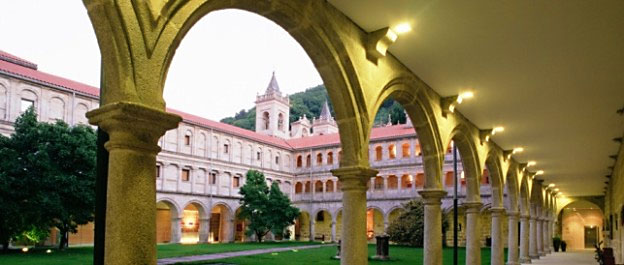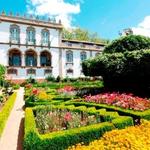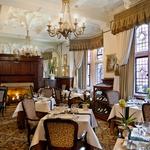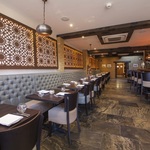It’s late morning in Galicia and the surrounding plains are pancake flat (something of a rarity in these parts it must be said), but dominating them is the towering visage of Monte de San Vicente.
You can see it standing proud in the distance way before you arrive at the town of Monforte de Lemos nestling around its base. This authentic Galician town certainly warrants a visit, after all, it’s the capital of the Ribeira Sacra, a region where the famed Mencia grape grows in abundance and the local museum and vast 18th century Nuestra Señora de La Antigua College are interesting diversions. It’s also a popular stopping off point along the well trodden route of the Camino do Santiago de Compostela – The Way of St. James. However, you’ll find the main reason for the town’s passing trade a little further north, up the seemingly endless windy narrow road to the very top of the mount and there, straddling the peak, in a former 17th century Benedictine monastery, lies the magnificent Hotel Monforte de Lemos.
Standing up there on the ancient ramparts, you can’t help but sense the history all around you, let alone feel the whole of Spain is laid out below your feet, but the real magic lies within. For this extraordinary building is a Parador and a mighty fine one at that. Its long-neglected interior now reborn as a luxurious hotel and restaurant; a property that combines all the magnificent architecture of the original monastery, the arches, the porticos and the high vaulted ceilings, with the luxurious fixtures and fittings you’d expect to find in a high end luxury hotel. And, like all Paradores, it’s the restaurant which deserves a particular mention, specialising in exceptional quality regional fare using only locally sourced ingredients; dishes like Lacón con grelos (a pork and vegetable stew) with chorizo sausage or zorza sausage and tripe Feira style.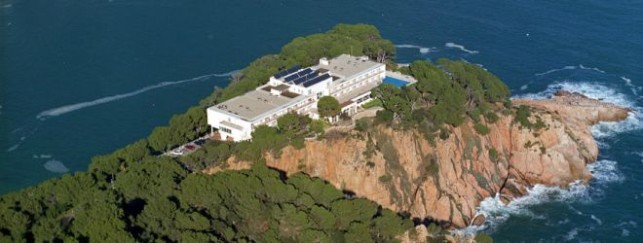
The Parador de Monforte de Lemos is a perfect example of why Spain’s Parador system has been such a success. The concept of the state funding the transformation of wonderful but abandoned medieval castles, palaces and monasteries into top end hotels is genius, but if it wasn’t for the vision of two men, it would never have even come about. At the turn of the 20th century Spain had no tourist infrastructure and little or no hotel standards to speak of either. So in 1910 Marquis de la Vega Inclán, a gentleman of some repute, realising that improving accommodation for tourists would do wonders for Spain’s international image, was given the unenviable task by the state of doing something about it. He turned to King Alfonso XIII for help, a man not unfamiliar with accommodation issues himself after failing to find acceptable lodging for guests coming to his own wedding. Of course he solved that particular problem by simply ordering the construction of a luxury hotel (now The Palace in Madrid ) but nevertheless, he was a highly influential ally to the Marquis and a keen tourist himself.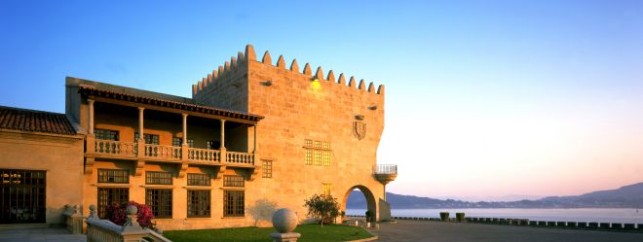
This fledgling partnership had its first commercial success during the king’s search for rich new hunting grounds (and a decent place to lay his head naturally). The keen eyed king spotted some virgin hunting lands around the Gredos mountains, a hidden area of natural beauty in the Castile region and promptly ordered a rustic luxury retreat built. On the 9th October 1928, and inaugurated by the king himself, the Parador de Gredos opened its doors for the very first time. The new partnership excited the king greatly and a ‘Board of Paradores and Inns of Spain’ was created, whose sole purpose was to create a network of hotels utilising Spain’s treasure trove of abandoned monuments in spectacular settings that conformed to high standards of accommodation and cuisine. And in a country blessed with countless castles and historical monuments there was certainly no shortage of potential venues.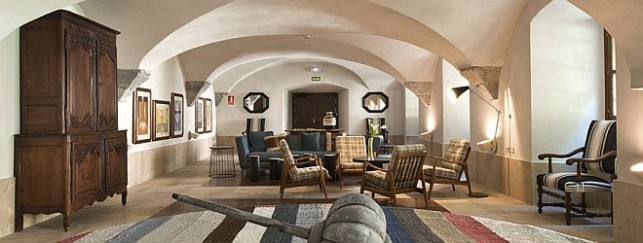
Fast forward eighty five years and the Parador network remains state owned and has grown to ninety four hotels with more openings scheduled over the next few years. The original concept of high quality and extraordinary locations is still written in stone so to speak, but now there are numerous Paradores built from the ground up, after all, there only so many crumbling edifices that can be restored. That said, new builds must still reflect architectural traditions of the region in some way, although in some cases that line is stretched with some highly creative thinking . Take the two most recent openings: Parado de Lorca in Murcia was found to be an archaeological treasure trove when work began on excavating its foundations. Significant finds from Islamic, Jewish and Christian cultures were unearthed everywhere, and so the new highly contemporary hotel opened with all kinds of archaeology, including a 15th century synagogue, embedded directly into the building structure. The avant-garde Parador Altantico right on Cadiz’ seafront is perhaps the most extreme example of Paradorian new thinking, rising like a phoenix out of the ashes of its former traditional self, all glass and steel and angles, with three swimming pools no less and a state of the art spa. Not surprisingly, with Cadiz being a port city, fish features prominently on the menu with Red Porgy and Sole in particular. But if you have a sweet tooth you’ll enjoy Turron de Cadiz,a terrine like dessert made with almonds, sugar and fruit.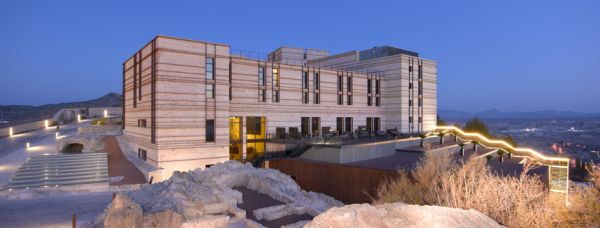
However my favourite Paradores remain firmly entrenched in the past. Hotels such as the five star Parador de Leon, a 16th century renaissance masterpiece and one of the jewels right on the Camino route to Santiago, the weary pilgrim statue directly outside the hotel a constant reminder to me of the countless numbers of people who have trod this historic pathway and still continue to do so. Its impossibly high ceilings, sweeping staircases, chandeliered palatial lounges and portico courtyards are timeless reminders of well heeled guests from days gone by. But this former Monastery of Saint Marcos has had a chequered history. It’s been a veterinary school, a Jesuit mission, a prison hospital, a military prison, a cavalry barracks and even a stud farm. Today though, it enjoys celebrity status as one of only two 5 star Paradores in the network. The second and perhaps the most famous, is at journey’s end in Santiago de Compostela. The Hostal dos Reis Católicos, right next to Santiago’s famous Cathedral, is considered to be the oldest hotel in the world, not surprising really when you consider the number of early Camino pilgrims who desperately needed somewhere to rest their weary bones after weeks of walking. That said, the service has gone up a notch or two since those days I can assure you.
How about the Parador de Granada, directly within the grounds of Granada’s magnificent Moorish Alhambra palace complex? One of the most popular Paradores in the network, this 15th century former convent positively oozes with Andalucían charm; its stunning tiled courtyards, charming fountains and lush gardens a melting pot of Arabic and Christian cultures. Just think, when all the visitors have gone for the day, you’ll have the Alhambra gardens all to yourself. With just 38 rooms, you’ll find availability a little challenging, but plan accordingly because it will be well worth it.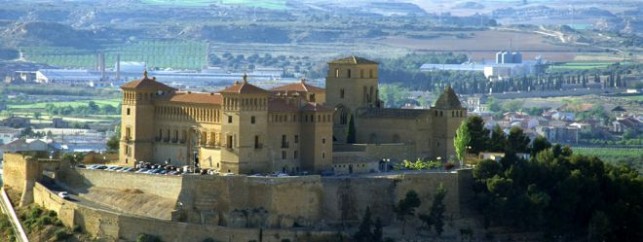
Over in Cardona just 80 kilometres from Barcelona, the Parador de Cardona will let you experience your own slice of Spanish history in the imposing 9th century castle overlooking the city. This was the last Catalan stronghold to fall to the Bourbons in the war of the Spanish Succession and the castle is still recognised as an emblem to Catalan nationalism. There’s no escaping the medieval feel; the moats, towers and gothic walls all conspire to transport you back to the days of old, (there are even four poster beds in many of the rooms) but to cap it all off, the restaurant serves up some delicious Catalan specialities.
I often wonder what the old Marquis’ take on all this would be if he ever got chance to see what’s happened to his grand plan. After all, that first Parador is still alive and well and as busy as ever, then again, some of the newer ones might raise his temperature a little. Overall though, I think he’d be pleased with the way it turned out. No, scratch that, I think he’d be delighted.
How much does it cost to stay in a Parador?
The general rule of thumb is around €105 per room per night. The best value way to visit a Parador is to use the 5 night card, where two of you can stay in 5 different Paradores for £420 room only. You also get a 20% discount on the menu. However there are 18 Paradores that charge a local supplement of between €30 and €55 per night, but in many cases this includes breakfast.
The ‘Rutas’ option is also very popular and will take you through regions you might not have discovered before. These are ready made routes of 3 or 7 nights which always start on a Sunday and give you a set package of Paradores in sequence, at very special rates.
A ‘lowest price yet’ promotion is also commonly used for individual stays and will be subject to availability. Keytel is the official UK agent for bookings and assistance with any route planning you may need
Keytel Paradores Tel: 0207953 3020

